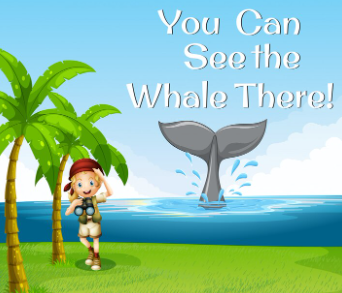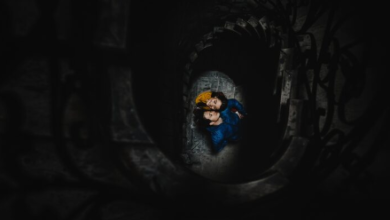The Day Jonah the Whale Beached on Réduit Beach: A Rescue Story

The dawn broke over Réduit Beach not to the familiar sounds of gentle waves and waking birds, but to a sight that would define the community for weeks to come: a massive, dark shape stranded on the sand, its breath condensing in the cool morning air in great, laboured puffs. This was Jonah, a young sperm whale whose mysterious journey had ended in a desperate struggle for survival on this tranquil stretch of coastline. What unfolded over the following hours was not merely a wildlife rescue operation; it became a profound narrative of human empathy, relentless effort, and a stark reminder of the fragile line that separates our world from the deep. The story of Jonah on Réduit Beach is a microcosm of our relationship with the natural world, a real-time drama that tested the limits of both human and animal endurance.
The initial discovery triggered a rapid, chaotic, and ultimately beautiful response. Local fishermen, often the first to sense the ocean’s rhythms, were the ones to raise the alarm. Soon, they were joined by families on their morning walks, tourists with cameras, and local authorities scrambling to coordinate. A scene that could have been one of panic transformed into one of purposeful organization. Volunteers formed human chains to ferry buckets of seawater, keeping Jonah’s immense body cool and hydrated under the rising sun. Veterinarians and marine biologists, arriving from across the region, assessed his condition with a quiet urgency, their faces etched with concern. They explained to the gathered crowd that a whale of Jonah’s size, out of its buoyant element, was effectively being crushed by its own weight, its organs under immense strain. This critical education turned bystanders into stewards, as everyone understood that every poured bucket of water was a fight against internal damage and overheating.
The technical challenges of refloating a creature as large as Jonah were Herculean. The gentle slope of Réduit Beach, so beloved by swimmers, was now a formidable obstacle. As the tide receded, hope seemed to ebb with it. Heavy machinery was carefully brought in to attempt to gently reposition him, a delicate operation that risked further injury. The primary goal was to keep his blowhole clear and his body supported until the high tide could return, offering a narrow window for escape. Throughout this ordeal, a strange and powerful connection formed between the people and the whale. Volunteers would speak of looking into Jonah’s deep, intelligent eye and feeling not just pity, but a sense of mutual understanding—a shared will for him to live. This emotional bond was the fuel that kept the effort going through fatigue and frustration, a collective determination to give this lost giant a second chance.
When the pivotal high tide finally began to swell, the energy on the beach shifted from sustained effort to focused anticipation. The coordinated push began, with dozens of people wading into the surf, pushing against Jonah’s side in unison with the rhythm of the waves. It was a battle of patience and force, a slow, grinding process where every inch gained was a victory. And then, in a moment that felt suspended in time, a larger wave lifted him, and his powerful fluke found purchase in the deeper water. With a final, mighty surge that seemed to draw energy from the very hope of the crowd, Jonah moved from the crushing weight of the sand into the liberating embrace of the sea. A collective gasp, followed by cheers and tears, erupted as his dark form disappeared beneath the waves, heading for the open ocean.
The saga of Jonah on Réduit Beach, however, does not end with his return to the sea. It leaves behind a community forever changed and critical questions about our role in the marine ecosystem. Whale strandings are complex events, often caused by factors like naval sonar interference, illness, navigational errors, or the tragic consequences of plastic pollution in our oceans. Jonah’s story is a powerful call to action, a living lesson that the greatest beaches are not just destinations for leisure but are front lines in the conservation of marine life. It reminds us that the ocean’s health is inextricably linked to our own, and that the compassion and cooperation witnessed on Réduit Beach must be channeled into broader, global efforts to protect the majestic creatures that call the deep their home.
FAQ: The Stranding of Jonah on Réduit Beach
Q1: What kind of whale was Jonah?
Jonah was identified by marine biologists as a sub-adult sperm whale. Sperm whales are the largest of the toothed whales and are deep-diving predators, famous for hunting giant squid in the ocean’s abyss.
Q2: Why do whales beach themselves? What caused Jonah’s stranding?
The causes of whale strandings are often difficult to determine with certainty. Common reasons include:
-
Navigational Errors: Whales use echolocation to navigate. Gently sloping, sandy beaches like Réduit can confuse their sonar, making the land indistinguishable from water.
-
Illness or Injury: A sick or injured whale may become disoriented and too weak to swim, causing it to drift ashore.
-
Human Activity: Underwater noise pollution from military sonar or shipping can disrupt their navigation and communication, leading to strandings.
-
Social Bonds: If a lead, sick whale beaches itself, its healthy pod members may follow out of social cohesion.
The exact cause for Jonah’s stranding remains unknown, but a full veterinary assessment suggested he may have been ill, which could have led to his disorientation.
Q3: How can I help if I see a beached whale or dolphin?
Your actions can be critical:
-
Call Professionals Immediately: Contact local authorities, wildlife rescue, or the coast guard. Do not attempt to handle the animal yourself.
-
Keep it Calm and Cool: Stay quiet and avoid sudden movements. Keep the animal wet by pouring seawater over its body (avoid the blowhole). Use wet towels or sheets.
-
Do Not Pull: Never pull on the fins or tail, as this can cause serious injury.
-
Protect the Blowhole: Ensure sand and water do not enter the blowhole (the hole on top of its head for breathing).
Q4: Was Jonah’s rescue considered a success?
Yes, in the immediate sense, it was a tremendous success. The primary goal of a stranding response is to return the animal to its habitat healthy, and Jonah was successfully refloated and swam away. The long-term survival of rescued whales is harder to monitor, but the successful effort on Réduit Beach gave him the best possible chance for survival.
Q5: What is the legacy of Jonah’s story for Réduit Beach?
Jonah’s story has left a deep and lasting legacy. It has heightened local awareness about marine conservation, inspired educational programs in schools, and fostered a greater sense of community responsibility towards the ocean. The event is a poignant reminder that we share our planet with magnificent creatures and that our collective action can make a life-saving difference.



